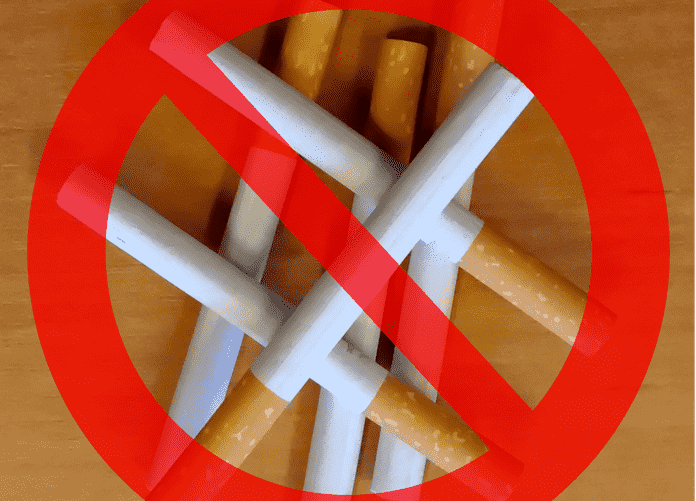It is a well-known fact that smoking is dangerous to health. Tobacco contains many unsafe substances such as acetone, tar, nicotine, and carbon monoxide. When these are inhaled, they not only affect your lungs but your entire body system. Smoking harms nearly every organ in the body, causing many diseases and affecting the general health of smokers.
Harmful effects of smoking
- Smoking affects the respiratory system by causing emphysema, chronic bronchitis, chronic obstructive pulmonary disease, lung cancer.
- It has effects on heart and blood vessels such as increased blood pressure, weakening of blood vessels, blood clots, increased risk of heart attack and stroke.
- It affects the digestive system with an increased risk of mouth, throat, larynx and esophagus cancer.
- Smoking increases the risk of other diseases such as diabetes, pneumonia, tuberculosis, osteoporosis, cataracts.
- Smoking affects the reproductive system. It decreases sexual performance in men and makes it difficult for a woman to become pregnant. It also increases the chance of miscarriage and birth defects in the unborn baby.
- It increases cholesterol and unhealthy fats circulating in the blood leading to their deposit on the walls of blood vessels.
- Smoking weakens the immune system, causes muscle degeneration, thinning of bone tissue, and loss of bone density.
It is always a good time to quit smoking. Quitting smoking is a very important step to enhance smokers’ quality of lives and longevity. Although it is hard to quit smoking, it is definitely possible.
Below, we describe different ways to quit smoking.
1. Nicotine replacement therapy
Nicotine replacement therapy comes in the forms of nicotine gum, patch, and inhaler.
Nicotine inhaler: A nicotine inhaler is in the shape of a cigarette. It contains a cartridge that has nicotine. When you inhale, nicotine vapor gets absorbed into your mouth and throat. Nicotine is not absorbed into your lungs, unlike a cigarette. As a result, you don’t get the same hit of nicotine as with smoking. A nicotine inhaler may be useful if you have problems breaking free from smoking habits, such as pulling a cigarette out of the pack, lighting it, putting it in your mouth and inhaling.
Nicotine patch: A nicotine patch is in the shape of an oversized adhesive bandage. The outer portion sticks to your skin and the inner part presses against and slowly releases nicotine into the skin. Many patches are sold in different sizes containing different strengths of nicotine. It is important to choose the right strength and size of the patch to quit smoking. Talk to your doctor or pharmacist for getting help on choosing the right patch strength.
Nicotine gum: The gum contains nicotine and feels like a chewing gum. When you chew the gum, nicotine is slowly released into your mouth. Cigarette smoking passes the nicotine immediately into the blood through the lining of the lungs, and it reaches the brain within a few seconds. The nicotine in the gum takes several minutes to reach the brain. This leads to less rapid “hit” with the gum as compared to a cigarette. The gum also delivers much less nicotine to the body as compared to a cigarette.
2. Prescription drugs
Many medicines can help you quit smoking. Medicines are taken to reduce the craving for nicotine. Your doctor can help you choose which medicine or combination of medicines will help you best in quitting smoking.
Varenicline (Champix) is a medication that reduces the craving for smoking nicotine and blocks the effects of nicotine if you smoke while taking it, thus making smoking less pleasurable. It is available with a prescription. Another medicine is Bupropion (Zyban) that also reduces the craving for nicotine. These medicines are easy to use and double the chances of quitting smoking.
3. Outside help
In Canada, the website Smokers’ Helpline is a free, confidential quitline service for smokers. They offer exercises, tips, and tools to help you quit smoking and have an online support group to share experiences.
In the United States, the website SmokeFree offers free information and resources on how to quit smoking. You can also call the NCI quitline at 1-877-44U-QUIT for individualized counselling.
4. Changing habits
Drink water: It is good to drink water with crushed ice, to help flush nicotine and other chemicals from your body rapidly. It also helps to satisfy the oral craving for some time. Try to use a straw with the same diameter as a cigarette.
Deep breathing: Deep breathing is another useful tip. Take a deep breathing break, in place of a cigarette break. Try to delay lighting your first cigarette by one hour. After the first one, if you again have a craving to smoke, try to delay by 15 minutes or half an hour. By doing so, you will be in control of when to say no to yourself.
Repetition: Every night, before going to bed, give yourselves five reasons to quit smoking.
Eating habits: Try changing your eating habits to cut down smoking. Drinking milk is a good way as it is considered incompatible with smoking. End your meals or snacks with something that won’t allow you to have a cigarette.
Spend time in areas where smoking is prohibited: During the first few days of quitting, try to spend as much time as possible in the areas where smoking is prohibited such as libraries, museums, department stores, churches.
Written by Pratibha Duggal
References:
- CDC – Fact Sheet – Health Effects of Cigarette Smoking – Smoking & Tobacco Use. https://www.cdc.gov/tobacco/data_statistics/fact_sheets/health_effects/effects_cig_smoking/index.htm.
- 26 Health Effects of Smoking on Your Body. https://www.healthline.com/health/smoking/effects-on-body#1.
- Harms of Cigarette Smoking and Health Benefits of Quitting. https://www.cancer.gov/about-cancer/causes-prevention/risk/tobacco/cessation-fact-sheet.
- Get help to quit smoking – Canadian Cancer Society. http://www.cancer.ca/en/support-and-services/support-services/quit-smoking/?region=on.
- Comparing Stop-Smoking Medicines. https://www.healthlinkbc.ca/health-topics/abl0794.



